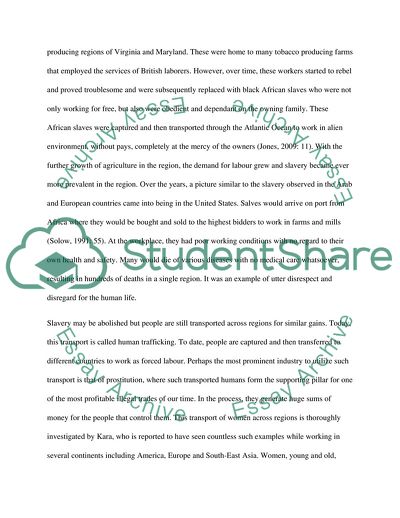Cite this document
(Is Slavery Abolished: From Slave Trading to Human Trafficking Report Example | Topics and Well Written Essays - 1500 words, n.d.)
Is Slavery Abolished: From Slave Trading to Human Trafficking Report Example | Topics and Well Written Essays - 1500 words. https://studentshare.org/history/1805741-is-slavery-abolished-compare-and-contrast-slavery-with-human-trafficking
Is Slavery Abolished: From Slave Trading to Human Trafficking Report Example | Topics and Well Written Essays - 1500 words. https://studentshare.org/history/1805741-is-slavery-abolished-compare-and-contrast-slavery-with-human-trafficking
(Is Slavery Abolished: From Slave Trading to Human Trafficking Report Example | Topics and Well Written Essays - 1500 Words)
Is Slavery Abolished: From Slave Trading to Human Trafficking Report Example | Topics and Well Written Essays - 1500 Words. https://studentshare.org/history/1805741-is-slavery-abolished-compare-and-contrast-slavery-with-human-trafficking.
Is Slavery Abolished: From Slave Trading to Human Trafficking Report Example | Topics and Well Written Essays - 1500 Words. https://studentshare.org/history/1805741-is-slavery-abolished-compare-and-contrast-slavery-with-human-trafficking.
“Is Slavery Abolished: From Slave Trading to Human Trafficking Report Example | Topics and Well Written Essays - 1500 Words”. https://studentshare.org/history/1805741-is-slavery-abolished-compare-and-contrast-slavery-with-human-trafficking.


